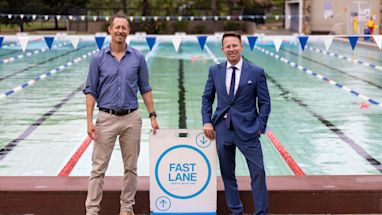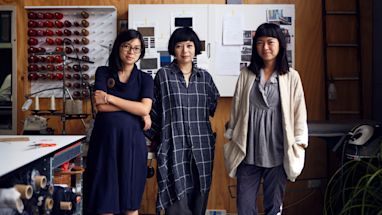Sydney Park’s history and ecosystem are reflected in a major upgrade including a stormwater harvesting and reuse facility. The upgrade also includes stunning new wetlands, a green pathway connecting Erskineville and Sydney Park Road, and an environmentally integrated public artwork.
The new Sydney Park stormwater harvesting project is the largest of its kind in the city.
Led by landscape architects Turf Design, the team behind it included Alluvium (water and environment), Dragonfly (ecology), Turpin Crawford (public art), and Partridge (structures). The team analysed, developed ideas, and solved technical problems throughout the design, creating a beautiful and biodiverse landscape.
At the heart of this work are the processes that enable urban waste water to be harvested and reused within and beyond Sydney Park. Making these water flows and reuse processes visible was an important part of the project. They highlight the intrinsic relationship between water and urban life, the landscape, people and plants.
Jennifer Turpin and Michaelie Crawford, together with industrial designer Konrad Hartmann, created the artwork, called Water Falls. The piece is designed to integrate with the look and feel of the wetlands. Water Falls also serves a vital role in distributing cleansed water from the new bio-retention system and channelling it back into the park.

Turpin + Crawford Studio creates site-specific artworks that interact with nature’s energetic forces through rhythm and movement. Its work straddles science, nature and the built environment to create a heightened awareness of place, energy and time. We talked to the studio about Water Falls and its approach to art and nature.
How did you arrive at the concept for Water Falls?
We worked closely over a period of 3 years with the project landscape architects, environmental engineer and habitat ecologist to find visual and active ways of enhancing community engagement.
What are some other projects that you’ve worked on in Sydney?
Tied to Tide is a wave, wind and tidal activated artwork. It was commissioned by the Sydney Harbour Foreshore Authority and installed in 1999. Its daily rhythmical performances harness the energetic forces of Sydney Harbour, reflecting the mood of the harbour.
Storm Waters is an environmental water artwork commissioned by Landcom at Joynton Park in 2002. It functions as part of the treatment of stormwater harvested from the surrounding streets. Characterising the recessed park as a water park, 2 large sets of water stairs aerate the water and bring it to the surface. It reminds us all of the drama of storms.
Tank was commissioned by the Attorney General’s Department and is located in the Downing Centre Tunnel. It is an artwork which conjures an enigmatic image of water’s surface or depth. Achieved entirely with light, this artwork is located near the historic headwaters of Sydney’s first fresh water supply.
How did Turpin + Crawford come to focus on works that incorporate natural elements?
We have long held an interest in the interconnected nature of our world. Human connections to ecosystems and water, wind and sunlight, combined with physical forces such as gravity, are a never-ending source of inspiration.
What are some challenges?
Much time is required to learn an environmental project’s complexities. Not only the science, but the creative or artful ways that might highlight environmental function. Art is about creating meaning. To do this in the public domain requires time, patience, collaboration, long-term commitment and tactical skill. Artists are not always regarded as professional. All this can be very challenging at times but also very rewarding and enjoyable.
Discover more about Sydney Park.
Published 13 July 2015, updated 3 June 2021



